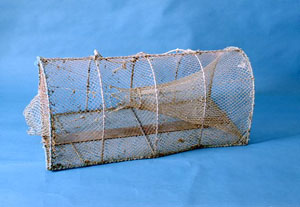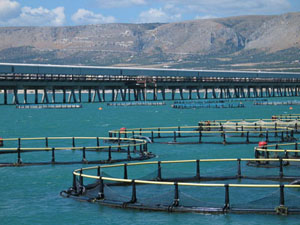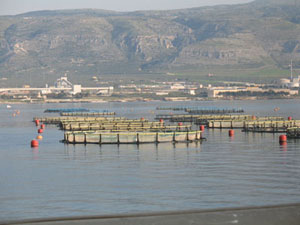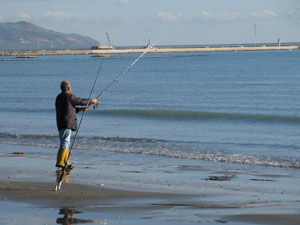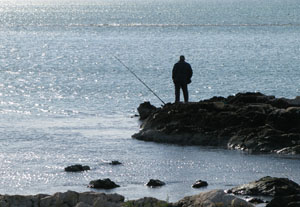The Cultural Centre of the Sea
Association of Social Promotion - Manfredonia
“The situation is tragic because they are not building boats”
The statistics by Guglielmi, Chief of Public Concession
No boats have been built in the boatyard of Manfredonia in the last few years, so the number of boats has dropped from 600 to 150 and the work placements decreased as well.
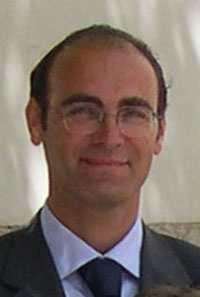
The engineer Guglielmi declares: “ the enterprises that are responsible for the building of the boats in Manfredonia are facing a difficult situation because the demand has decreased causing consequently a reduction of the employees”.
“The pleasure craft market is facing a big recession this year” says the engineer Guglielmi, leader of the Guglielmi Sas, the historic boatyard founded in 1959 by Francesco Guglielmi.
There has been a reduction of 50% of jobs compared to the 20% in 2010.
As a result of the credit crunch the boatyards in Manfredonia are not working and many entrepreneurs had to reduce the number of employers. There has been a decrease in the sales as well and the payments have been delayed. There are six boatyards in Manfredonia: three of these are responsible for the fishing such as Guerra, Rucher and Coop Rucher; On the other side the ones that works in the pleasure craft market: are: Guglielmi, Marli di Lello and Zammarano. According to the Ucina, from 2008 to 2012 the naval sector has lost 80% of its value. This situation damaged the economy of Manfredonia which is based mainly on fishing and sailing.
Nowadays we don’t see many improvements although this sector should be promoted as it plays an important role for the development of tourism.
“People are very disappointed because of the lack of jobs”, points out Guglielmi,” because many enterprices are managed by families and so the employees are members of the family as well ”.
Another sign of the negative trend is that at the moment they haven’t built any boats, it has never happened before. Usually people had to apply in advance as there were many requests for building a boat.
Although Manfredonia has a long tradition in the field of boatyard, the boats are being built somewhere else where the prices are more competitive.
In addition to the lack of jobs there isn’t enough currency either which puts it in a difficult situation all the enterprises of the commercial harbour in Manfredonia.
The sector of fishing is also facing the crisis because it was one of the first in Italy until ten years ago with 600 boats, now it only has 150.
The reason for the recession are also linked to the increase of fuel price, the laws about fishing and the boat licence.
22 December 2012
Source: L’Attacco - Lucia piemontese
Translated by Pia GrassoFishing as a professional activity is practiced by people who subscribed in the fishing register for enterprises and for profit purposes.
There is a variety of equipment in order to catch the fishes according to the species.
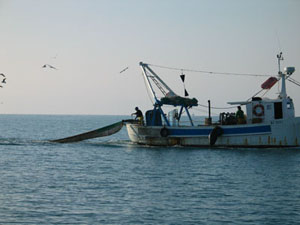
Technology helped the fisherman to do an efficient job. For example sonar and echosounder improved the way to find school of fishes in order to save money, time and efforts.
It has also improved the techniques to catch the fishes, work conditions, security and the quality of life of people that do this job.
There are three types of fishing:
1) local coastal fishing
2) nearby coastal fishing
3) Mediterranean fishing
Types of fishing in the Maritime Department of Manfredonia:
1) Local coastal fishing up to 6 miles to the coast, it can be extended to 12 miles.
2) Nearby coastal fishing up to 20 miles, it can be extended to 40 miles.
Gillnet
It’s the most common net, it consists of a series of panels of meshes with a weighted "foot rope" along the bottom, and a headline, to which floats are attached. A fish swims into a net and passes only part way through the mesh. When it struggles to free itself, the twine slips behind the gill cover and prevents escape.
It will be caught by the fisherman when he weighs the net.
Gillnet is generally used to catch selected fishes.
The size of the meshes can vary according to system of the fisherman and the areas.
For this reason the gillnet is equipped by the fisherman when he stops for a break when the sea is rough.
Trammel net
It consists of a single netting, it has a specific capture that depends on the size of the mesh it’s equipped with.
The fish isn’t trapped in a sack like with the gillnet but it goes into the mesh where it cannot move anymore to go back or forward.
In professional fishing there are combined gillnet-trammel nets.
This bottom-set gear has two parts: the upper part is a standard gillnet where semi-demersal or pelagic fish can be gilled,the lower part is a trammel net where bottom fish can entangle.
The combined nets are maintained more or less vertically in the usual way by floats on the float line and weights on the ground line.
Gillnests
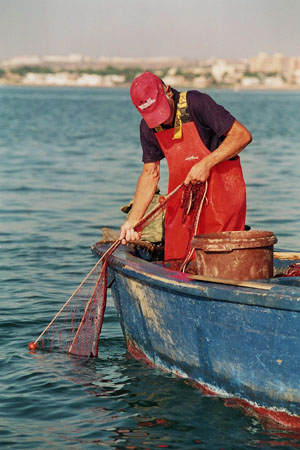
The distinction between gillnet and trammel net is their equipment. They can be distinguishes in fixed, deriving and turning around nets.
Gillnets are usually lowered on the sea bottom and they are anchored at it as well.
In the surface of the sea there are floats that help to find them and get them back.
When the fisherman wants to get them away, he catches the floats and he finds the fish attached to it.
The main species caught through this system are: mullets, red snappers, gilthead breams, basses, cuttlefishes and mackerels.
Encircling gillnets
Le reti da posta are lowered following a straight line or moving away a little bit from it.
Even when they are lowered zig zag they always remain barricade nets. Encircling gillnets are gillnets set vertically in shallow water, with the float line remaining at the surface so they encircle fish. Small open boats or canoes can be used to set the net around the fish.
Once the fish are encircled, the fishers shout and splash the water to panic the fish so they gill or entangle themselves.
Encircling gillnet is not much used but there are some areas where it’s well known.
Lobster trap
Lobster traps are small traps that are dropped onto the sea floor to catch fishes.
A piece of bait is placed inside the trap, it’s important to choose the bait as it has to be tasty and cheap as well.
The trap can consist of a wooden frame surrounded by a rope mesh. The majority of the newer traps found it consist of a plastic-coated metal frame.
Lobster fishing is generally made on small boats , if you want to shove off it’s necessary a fishing boat with well equipped.
Lobster traps aren’t dropped one by one but all together with a rope called beam.
Seiners for anchovies and sardines
These kind of nets are called fishing lamps, purse seines, or in Italian “saccoleve”. They are 800 mt long and 120 mt high.
We refer to the length of the cork file which is the real length of the net, concerning the height we refer to the height of pulled mesh which is theoretical.
This height cannot be reached in fishing. The choice of the net is determined by two aspects: the depth of the sea bottom and the length of the net used.
The net has to be closed on the file by leads if the circle is very big, if the height of the cylinder that the net forms when dropped is too small, it would be impossible to close it.
La pesca con la rete a circuizione per acciughe e sarde is made with big boats, sometimes the trawler in addition to the net, it has also two or three small boats equipped with electricity. When these boats are dropped to the fishing area, under the light of their lamps they collect and make bigger the school of fishes.
When the small boats meet all together , just one boat has the light on with all the school of fishes caught.
Fishing attraction is done with lamps up the sea level, but it can be done with lamps that can go under the sea as well.
When the net has been closed and the fishes are captured, fishermen start to get the net back trying to reduce the space for the fishes. This operation is made with a powerblock.
The meshes of the net are very small and they can vary according to the size of the fish.
Fishing rules request a mesh of 14 millimeters.
The most common meshes are between 8 and 10 millimeters.
Vongolara
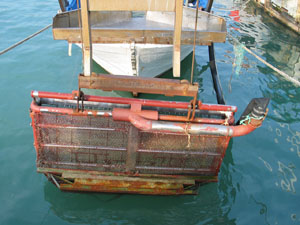
As the name suggests, it’s a tool used to catch clams.
In the past it was used la vongolara by hand that consisted of a big rake and a long handle.
Today it’s used an electric vongolara with the flush of the water. The tool has bigger dimensions and it hasn’t the handle. It’s possible to capture many clams and without effort.
The most common species caught through this tool are:
clams, razor clams, cockles.
Cannellara
Cannellara is very similar to vongolara but it can penetrate better the sea bottom. It’s necessary to catch the cannellini.
Trawl
Trawl consists of many baits put all together. Baits are placed regularly on a lead called bean of trawl. Trawling can be divided into bottom trawling to catch bottom fishes and mid water trawling to catch pelagic fishes such as tuna and swordfishes.
In professional fishing it takes many years to see the results, it’s necessary to drop many baskets full of baits. It’s long and difficult to get them back. In the last few years many tools have been introduced in order to drop many baits, reducing time and effort and increasing the profits.
There are some areas where trawl fishing gives better results than other areas where there different types of fishing.
Trawling is a method of fishing that has a limited consumption of energy and it respects the environmental resources. It’s a very selective method of fishing.
Rastrello da Natante
It consists of a firm opening with the underside full of iron teeth, the top part form an half circle.
The rake has also a short handle long 1-2 mt to set the incline of the teeth.
The teeth are 30 cm long and they are very sharp in order to go into the sea bottom and catch the mollusks. They are very close to each other so the fishes can’t escape.
The sack has a single net in order to catch and keep the mollusks collected with the rake.
The hauling is done by hand without the use of mechanical winches or mast and derrick or stern arch, that are absent in traditional boats that use this tool.
The rake vessel has the following features:
- The length of the opening doesn’t have to exceed 1,50 mt;
- The opening of the mesh has to be at least 20 mm for the fishing of tellins and 30 mm for the other mollusks;
- The sack to collect the net doesn’t have to exceed 2,00 m;
Concerning the craft, there are the following limits to respect:
- Gross tonnage doesn’t have to exceed 10 t;
- The power of the engine doesn’t have to exceed 100 HP.
Shore seines
Shore seine is still used sometimes in professional fishing by Italian fishermen.
Fishing operations need at least from six to twelve people. The net and the tow lines are placed in a small boat. When setting the first towing line is fastened ashore, then the line, the first wing, the bag, second wing and second line is set out in a wide arc and brought back to the beach. At this point the drag lines are towed slowly and simultaneously from the beach. Always keeping an eye at the gear. The wide arc becomes smaller and prevent the fish from escaping. While towing the fish is herded in the centre of the bag from where it will be caught.
This type of fishing is completely manual and it gives the possibility to earn money. There aren’t many expenses expect from repairing the net and replacing old meshes.
The boat used for the operations is a rowboat so there aren’t any expenses for the fuel.
Bottom trawls
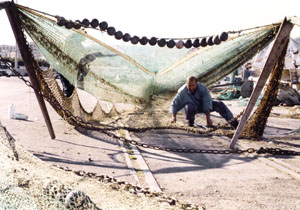
Through the mesh below which is longer, drawing power is applied to the corkline.
This system let the groundrope to be attached to the sea bottom, so the fish has no possibility to escape.
Italian towed net has two longer wings than the others, these have the same length as the body of the net without bag.
The top part of the net is called sky, while the underside is called line.
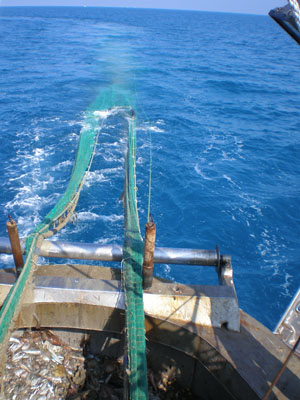
The size of the bag can vary according the boat and how many fishes the fisherman wants to catch, it’s protected by a lining that prevents the abrasion of the underside and it strengthens the bag in case it’s full of fishes. The two wings end with wooden or iron tonnages of 40-60 cm.
The doors make sure that there is an horizontal opening of the net. Italian fishermen usually use rectangular trawl boards but there are also plastic and iron trawl boards. Between the net and the trawl board there are hemp ropes that are about 200-250 mt long, while for beam trawls the hemp ropes are halved.
Bottom pair trawls
Fishing with sailing boat required all the sails to be towed in pairs. Through this system it would have been difficult to take everything under control because the wind was changeable so fishermen used to work in pair.
Rapido
It’s a kind of bottom trawl with a fixed opening; it has been designed by Italian fishermen to catch soles.
The opening consists of a rigid frame on which there are the teeth that go into the sea bottom and catch the soles.
When the teeth are used up, the “ iron” is replaced by a new one with other teeth.
On the top part of the rapido there is a bent board that make pressure.
More rapidly the rapido is towed and more it is attached to the sea bottom. That’s why it is called rapido, because it can be towed rapidly. It’s very important for a good operation of the rapido to regulate the incline of the board and also the protrusion of the teeth of the slide.
The horizontal size of the rapido can vary according to the power, but generally it doesn’t exceed 4 meters for security reasons. Each boat can tow two, three or four rapido according to the power.
The tow last about one hour in order to avoid that a foreign body get stuck in the teeth. The rapido is used mainly to catch soles, in some areas it’s also used to catch mollusks such as scallops and razor clams.
The rapido is used on sandy or muddy sea bed with a limited depth. It very popular in the Adriatic Sea and in the Tyrrhenian Sea.
Beam trawl
It’s a traditional bottom trawl used in Italy in the past, nowadays it’s still used in other countries. It’s made of two shoes attached at the end of the beam. The trawls are adapted and made more effective by attaching tickler chains.
As opposed to the rapido, velocity is not always an advantage because the gear can come off the sea bed. Each boat can tow two beam trawls. Nowadays the beam trawl has been replaced by the rapido which is more efficient.
Trawling gears
When it’ s not needed to capture mollusks such as clams that live in the substrate but we want to catch sessile mollusks that live on the sea bottom, it’s possible to use a gear that does not go into the sea bed but it just collects them.
Fishermen designed gears that can vary depending on the area, these are used to catch oysters and mollusks in the South.
These gears are similar to beam trawls but with a different size, mesh and shape of the net.
In the tools used to catch mollusks, the net behind the opening is a little closed bag long one or two meters, It ‘s only necessary to overturn it to collect the mollusks.
The opening is always fixed and rigid but it can be obtained in different ways.
An example is an iron bar with a chain at the edge. Another one is an iron rectangle long about 1,50/2,00 meters and 30 cm high.
Pelagic trawling net for pairs
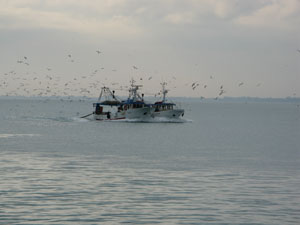
Recently entangling nets have been replaced by pelagic trawling nets to catch bluefish. These kind of nets have been introduced in Italy by fishermen who imported them from the North Adriatic Sea where they were produced for the first time.
In Italy this net is used only in pairs.
Pelagic trawl are towed by two boats . One rope goes to the mallet on the top and another one to the mallet underside. The net is made of four mallets and four ropes: footrope, headrope and two side ropes. The net can be towed in various ways, mid water or near the sea bottom, in this case it’s called semi-pelagic net. This net is used as a semi- pelagic net because in our sea bluefish stands on the bottom. Semi-pelagic fishing is more secure because fish cannot escape easily and as the boats don’t have specific gears to control the net, it’s easier to work with footrope on the sea bottom. At mid water we can’t explore the area where the satellite navigation has found the bluefish so the capture is uncertain.
The net is made of many meshes. We can distinguish four parts: a top part, an underside part and two side parts.
In the flying net as it has been modified in Italy, the side parts have half meshes comparing the other parts. The meshes of the first part of the net are about 200 mm but there are also meshes of 500 mm. They decrease near the bag where they have 20 mm of opening.
The meshes in the bag are very small in order to catch the fish in a better way and it’s also necessary to avoid the opening even to the smallest of the three pelagic species contained in the bag: anchovies, sprats and Sardinian anchovies.
Source: federcopesca.itAquaculture has always been practiced since ancient times, in an Egyptian discovery of the 2500 B.C. there is a man painted while catching tilapia from a pond, Phoenicians, Etruscans and Romans had always been interested in aquaculture, Romans bred moray eels and eels on the coast in Lazio, in Europe this culture developed in Middle Ages.
Aquaculture is a word that indicates a controlled production. There are different types of breeding : intensive, extensive and semi-extensive. In intensive breeding fishes are kept in fresh water or brackish water and they are fed artificially. In intensive fishing in open sea the breeding is made in floating cages. In extensive breeding fishes are fed in a natural way and they grow in lagoon or coastal ponds. In semi- extensive breeding the fishes are fed both artificially and naturally.
Nowadays the main species to be bred are: salmon, gilthead bream, seabass, trout. There are breeding that include crustaceans and tropical prawn or plants like marine algae for the alimentation of human beings and for the industrial production, mollusk farming ( mussels and clams) and fish farming (touts, seabasses, giltheads and ornamental species).
Mariculture indicates the activity of farming in the sea such as mollusk farming, fish farming in cages and in artificial barriers.
Both aquaculture and mariculture have become very important not only for fish production but also for the preservation and conservation of the environment.
Source: Official site of Provincia di RavennaL'Italia è attualmente uno dei maggiori produttori di mitili (Mytilus galloprovincialis, comunemente chiamati cozze, peoci o muscoli) a livello mondiale. Secondo i dati riportati nel V° Piano Triennale della Pesca e dell'Acquacoltura, nel 1995 la produzione totale era stata di circa 132.000 tonnellate, portando l’Italia al primo posto in Europa e al secondo posto a livello mondiale. Di questi, circa 30.000 tonnellate provengono dalla raccolta su banchi naturali, mentre il resto è prodotto in impianti di allevamento situati, in gran parte, lungo la costa Adriatica centro-settentrionale.
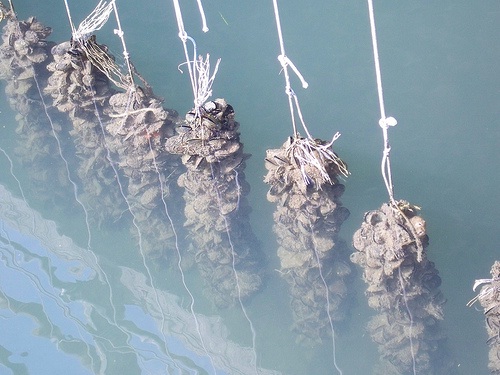
La molluschicoltura è una tipologia di allevamento può essere assimilata all'acquacoltura estensiva in quanto i mitili, essendo organismi filtratori, traggono il cibo dall’ambiente e l’intervento umano riguarda la struttura dell’impianto (su pali in acque lagunari o su long-lines in mare aperto), la sua manutenzione (verifiche dei cavi portanti e relativi agganci ai corpi morti, controllo e sostituzione dei galleggianti, ecc.) e la gestione dei cicli di produzione (semina, confezionamento delle reste, diradamento, ecc.).
Il «seme» viene generalmente reperito in primavera da banchi naturali o dalle strutture degli stessi impianti (pali, cavi di ancoraggio, ecc.) e viene immesso in manicotti di rete (reste) che vengono poi appese ai filari galleggianti a circa 2 - 2,5 metri dalla superficie dell’acqua o, in acque lagunari, alle ventie sostenute dai pali. Il raccolto ha inizio nel tardo autunno, quando i mitili hanno raggiunto la taglia minima commerciale (5 cm). Durante il ciclo di allevamento in sospensione vengono effettuate diverse operazioni di manutenzione (pulizia e smistamento delle reste) al fine di favorire la crescita dei molluschi e ridurne la mortalità.
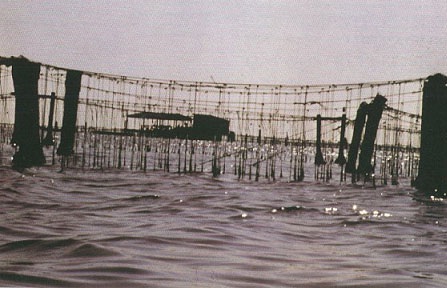
Nell’ultimo decennio la molluschicoltura ha avuto un notevole incremento lungo la costa dell’Adriatico centro-settentrionale, dove si è assistito ad una generale tendenza allo sviluppo di impianti di tipo long-line in mare aperto, meno soggetti al rischio di mortalità elevate a causa delle crisi di ipossia che si verificano frequentemente in ambienti costieri confinati. Recentemente, però, anche questi impianti hanno dovuto far fronte a notevoli difficoltà legate da un lato a problemi di tipo ambientale, come la presenza di biotossine algali (DSP), elevate produzioni di seme che tende ad insediarsi sulle reste stesse soffocando i mitili sottostanti, mareggiate, ecc. e, dall’altro, a problemi di tipo economico, dovuti al fatto che l’aumento dell’offerta, anche da parte di altri paesi europei ed extraeuropei, ha determinato una notevole riduzione dei prezzi di mercato.
Un’altra tecnica idonea ad aree di mare aperto consiste nello sviluppo di nuovi banchi di mitili tramite l’immersione, sul fondo marino, di opportuni substrati artificiali. In questo caso l’intervento da parte dell’uomo consiste semplicemente nel fornire superfici utili per l’insediamento delle larve presenti in abbondanza nell'ambiente e che, altrimenti, andrebbero in gran parte perdute, e nella raccolta finale. Un esempio di questa tipologia di allevamento si può ritrovare in alcuni impianti di barriere artificiali esistenti lungo la costa adriatica centro-settentrionale presso i quali, oltre ai corpi tradizionali (cubi in calcestruzzo), sono stati immersi anche gabbioni in cemento i cui travi portanti sono particolarmente idonei all’insediamento e all’accrescimento di mitili grazie al notevole flusso d’acqua ed alle micro correnti che si creano attorno ad essi.
I costi di investimento iniziali in questo caso sono più elevati rispetto a quelli richiesti per gli impianti sospesi, ma si ha una minore richiesta di manodopera per la gestione dell’impianto, una riduzione delle perdite causate dalle mareggiate, la possibilità di commercializzare un prodotto di dimensioni superiori alla taglia minima legale ed una riduzione dei rischi di contaminazione da biotossine algali la cui concentrazione tende a diminuire con l’aumentare della profondità.
Grazie ai risultati ottenuti con l’applicazione di nuove tecniche di preingrasso, anche l’ostricoltura può essere considerata attualmente un settore con buone prospettive di sviluppo. Le tecniche di allevamento dell'ostrica sono simili a quelle utilizzate nella mitilicoltura sospesa e il prodotto finale è qualitativamente competitivo a livello europeo.
Al momento attuale comunque, la produzione nazionale è estremamente limitata e solo recentemente alcuni vivai hanno destinato a tale attività alcuni filari.
La reintroduzione dell’ostricoltura, un tempo ben avviata in alcune aree italiane, è fortemente auspicabile anche in termini di diversificazione delle monocolture di mitili, con conseguente riduzione dei rischi legati all’insorgere di patologie e parassitosi che vengono inevitabilmente favorite da elevate densità di individui di una stessa specie.
Fonte: Leziosa.comIl "Pescaturismo" consiste in un'attività integrativa alla pesca artigianale che offre la possibilità agli operatori nel settore di ospitare a bordo delle proprie imbarcazioni un certo numero di persone diverse dall'equipaggio per lo svolgimento di attività turistico-ricreative. L'attività di Pescaturismo è attualmente regolamentata dal decreto ministeriale 13 aprile 1999, numero 293 (G.U. n. 197 del 23 agosto 1999), che comprende lo svolgimento di attività nell'ottica della divulgazione della cultura del mare e della pesca, come: brevi escursioni lungo le coste, l'osservazione delle attività di pesca professionale, la ristorazione a bordo o a terra, la pesca sportiva e tutte quelle attività finalizzate alla conoscenza ed alla valorizzazione dell'ambiente costiero che possono servire ad avvicinare il grande pubblico al mondo della pesca professionale.
L'eccezionale bellezza paesaggistica, la peculiarità morfologica-geologica delle più interessanti località turistiche italiane e la necessità avvertita nel mondo della pesca di creare nuove opportunità di lavoro e nuova occupazione hanno portato alla nascita del Pescaturismo. L'attività rappresenta una proposta innovativa per rispondere all'esigenza di diversificazione di parte delle attività di pesca, in particolare all'interno di Aree Marine Protette, riqualificando una quota di mercato turistico in parte esistente e creandone una aggiuntiva particolarmente interessante; il tutto in perfetta linea con l'esigenza di politiche che rispondano ai criteri di un 'Turismo responsabile'.
Il concetto di 'Turismo responsabile' nasce da nuove esigenze di valorizzazione e riscoperta della realtà sociale ed ambientale dei luoghi più suggetivi e delle antiche tradizioni della nostra cultura. Si vuole offrire al visitatore la possibilità di inserirsi in maniera armonica nel contesto preesistente senza alterarne le preziose particolarità. Gli usi e le tradizioni legati alle marinerie italiane possono offrire nuove possibilità di rilancio di questo settore, rispondendo contemporaneamente alle politiche europee di razionalizzazione dello sforzo di pesca.
Il Pescaturismo può portare molteplici vantaggi: il mantenimento di quell'integrità sociale ed economica spesso danneggiata dal voler promuovere attività che non tengono conto del contesto locale; una valida risposta ai problemi legati alla pesca, con la possibilità di integrazione del reddito degli operatori del settore attraverso un'attività non contrastante con la loro stessa identità storica e culturale; la razionalizzazione del prelievo delle risorse, ottenuta tramite l'orientamento verso una graduale diversificazione delle attività produttive. Il pescaturismo permette, infine, al pescatore, di mettere in rilievo aspetti della cultura marinara e delle tradizioni della pesca artigianale, troppo spesso sottovalutati.
Fonte: LegapescaSi chiama "pesca non professionale" quella che sfrutta le risorse acquatiche marine vive per fini ricreativi, turistici, sportivi e scientifici.
Lo dice il decreto legislativo 4/2012, entrato in vigore il 2 febbraio 2012, relativo alle misure per il riassetto della normativa in materia di pesca e acquacoltura.
Si tratta di un testo normativo fortemente innovativo soprattutto perchè, oltre ad abrogare quella che per decenni è stata la legge madre in materia di pesca marittima - L.963/1995 -, ha introdotto il sistema della licenza pesca a punti nel settore della pesca professionale.
Sono vietati, sotto qualsiasi forma, la vendita ed il commercio dei prodotti della pesca non professionale.
Il c.d "pescatore sportivo", accezione comunemente usata per indicare la categoria dei pescatori non professionali, dal 1° maggio 2011, ha l'obbligo di farsi censire secondo quanto stabilito con decreto del Ministero delle politiche agricole, alimentari e forestali del 6 dicembre 2010, attraverso una registrazione on-line sul sito del MIPAAF, oppure compilando uno stampato in duplice copia e consegnandolo all'Ufficio Marittimo più vicino.
L'attestato della avvenuta comunicazione vale come titolo per l'esercizio della pesca non professionale (sportiva/ricreativa/dilettantistica).
Il pescatore subacqueo non può raccogliere mitili per un quantitativo superiore a 3 kg al giorno. Inoltre, è vietata la cattura giornaliera di pesci, molluschi e crostacei in quantità superiore a 5 kg, salvo il caso di un esemplare singolo di peso superiore…
Erminio Di Nora

